For anyone travelling in India, the train journeys are half the adventure. Not only is this one of the easiest and most efficient ways to see the country, but it also feels like a right of passage. If you can navigate a crowded platform with luggage in tow and elbow your way onto an Indian train, then surely you can survive anything!
Yes, you’ll need to brace yourself for some long rides, and likely a few train delays, but they say half the fun is getting there…at least in retrospect. (That was certainly not how I felt when I found out my train to Varanasi was delayed by 5 hours!)
With that in mind, today I’m sharing a list of travel items to bring on an Indian train for some added safety, comfort and fun, because trust me, you’ll need to find ways to keep yourself entertained on those 20+ hour rides.
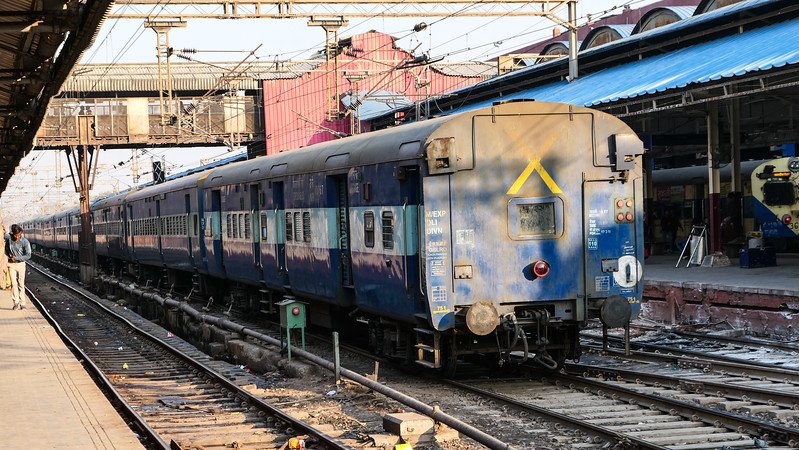
Things to Bring on an Indian Train: Essential Packing List For Comfort, Health & Safety
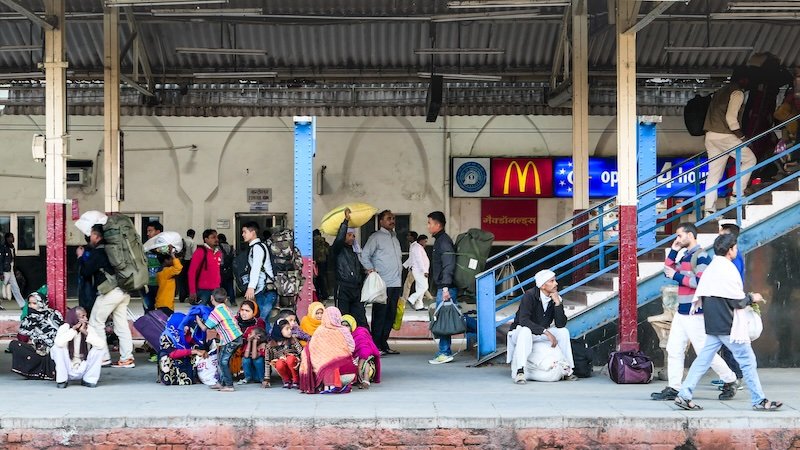
Warm clothes:
Even if it’s warm out, it can get pretty chilly in AC1 and AC2 with the air conditioning on full blast – especially if you end up on the top bunk! – so pack a thick hoodie or a warm fleece. My travel outfit in India consisted of a hoodie, thick leggings, fuzzy socks and a scarf. If you’re travelling in the Sleeper Class this isn’t so much an issue as you’ll have open windows and fans; I met a few travellers who complained about it being too warm in that section, so keep that in mind and dress accordingly.
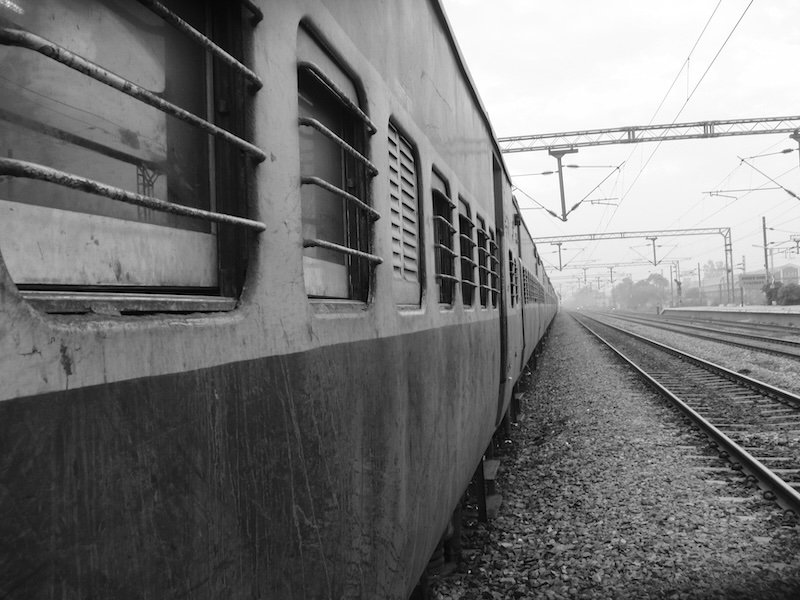
Pacsafe:
You’ll be able to store your main backpack or suitcase underneath the bottom berth (I always keep mine locked with a combination lock ), but it’s a good idea to keep your smaller daypack with your documents and valuables close to you. If you’re a deep sleeper, consider locking your daypack in a Pacsafe and keep that behind your head where it’s out of reach.
Reading material:
I always bring my Kindle with me and make sure I have a couple of books to last the journey.
Whistle:
I know this may sound a bit overboard, but if you’re travelling as a solo female in AC1 where there aren’t always as many passengers, a loud whistle could help keep you safe. We had an incident on one of the overnight trains where a man in uniform tried to assault a foreign female while her boyfriend went to the bathroom (she was alone in one of the 4-berth cabins in AC1), so safety isn’t something to take lightly. If you’re travelling alone, it might actually be a better idea to travel in the Sleeper Class where it’s more of an open layout and you are surrounded by people – safety in numbers. I’ll be writing more about safety in India in another post.

Travel pillow:
If you’re travelling in AC1 or AC2 attendants will come around with pillows, however, in the Sleeper Class no pillows are provided. Either way, I’d recommend bringing your own travel pillow. While the pillowcases we got in AC1 were clean, the pillows themselves had seen the test of time and were heavily stained.
Ear plugs:
If you’re a light sleeper a pair of ear plugs will come in handy. Trains can get a bit loud.
Silk sheet:
This is something to add to your packing list if you’re planning on doing a lot of train travel and/or staying in hostels. Again, while the bedsheets we were provided were clean, the blankets were not and unfurled a big cloud of dust, so a silk travel sheet set that you can use as a liner might be something to look into.
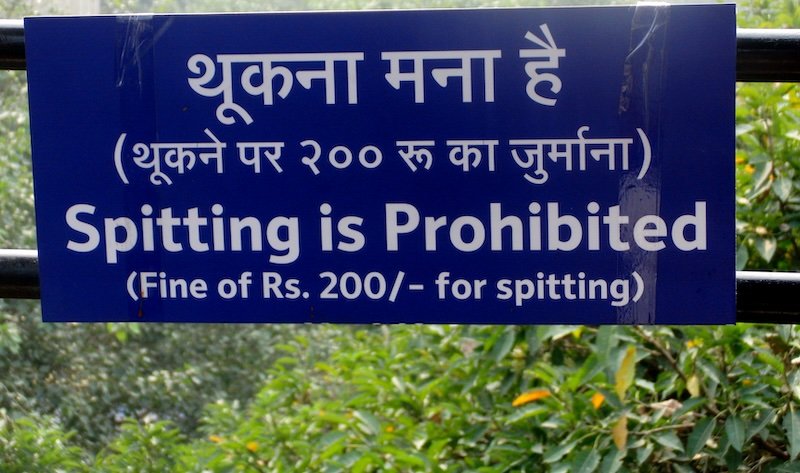
Toilet paper:
On a good day, you may find half a roll of toilet paper in the bathroom, but more often than not, you’ll find that there is no toilet paper at your disposal. You can buy packs of tissues or rolls of toilet paper at convenience stores and little shops in the train station, so stock up.
Wipes and sanitizer:
Sometimes water runs out on the longer train rides and that means you can’t wash your hands. Bring a pack of baby wipes and some hand sanitizer. Trust me, you’ll need it.
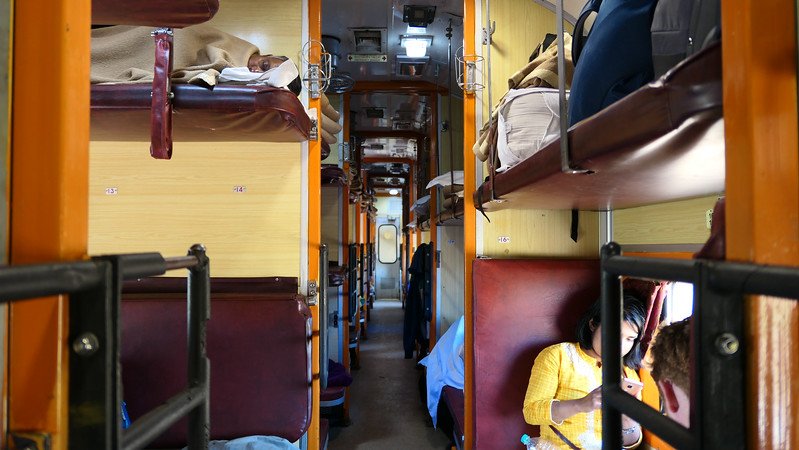
Water:
You might be tempted not to drink water so you can avoid the toilets on the train, but getting dehydrated is no fun either. You can pick up 1.5L water bottles at the station and vendors will also come onboard to sell soft drinks.
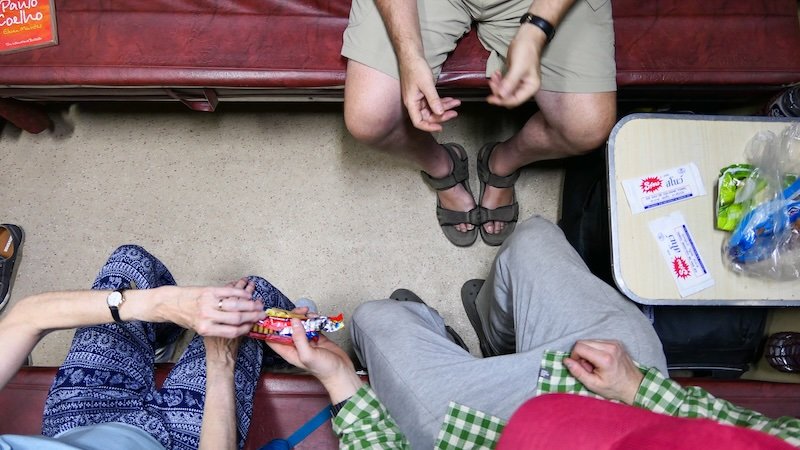
Snacks:
Indian train rides are notoriously long and they also tend to be delayed, so it’s good to come prepared with food to last you the journey. Most train stations have little convenience stores where you can pick up things like cookies, chips, peanuts, chocolates, and other non-perishable snacks. You can always restock your supplies when vendors come through the train.
Imodium:
In case you get Delhi Belly. It always strikes at the worst of times!
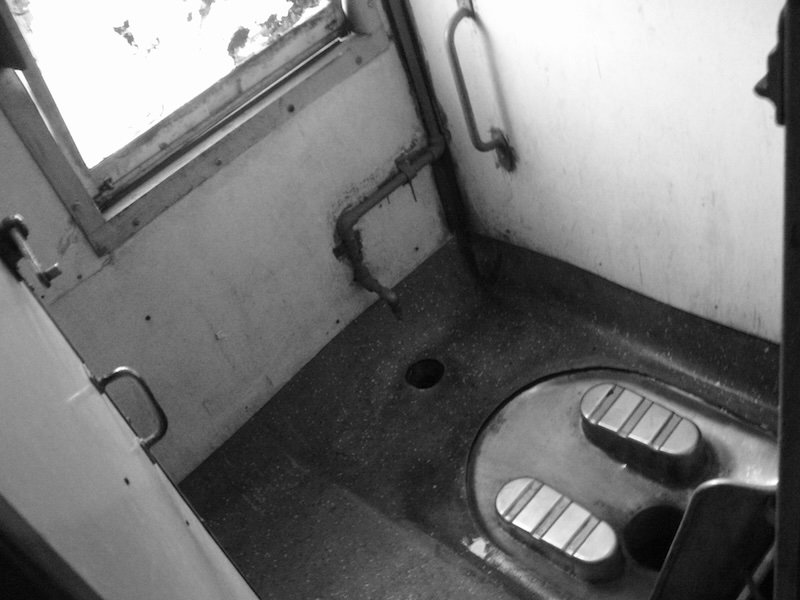
Headlamp:
This comes in handy if you need to use the bathroom in the middle of the night when the lights have been dimmed. I’d choose a headlamp over a flashlight as this frees your hands for business!
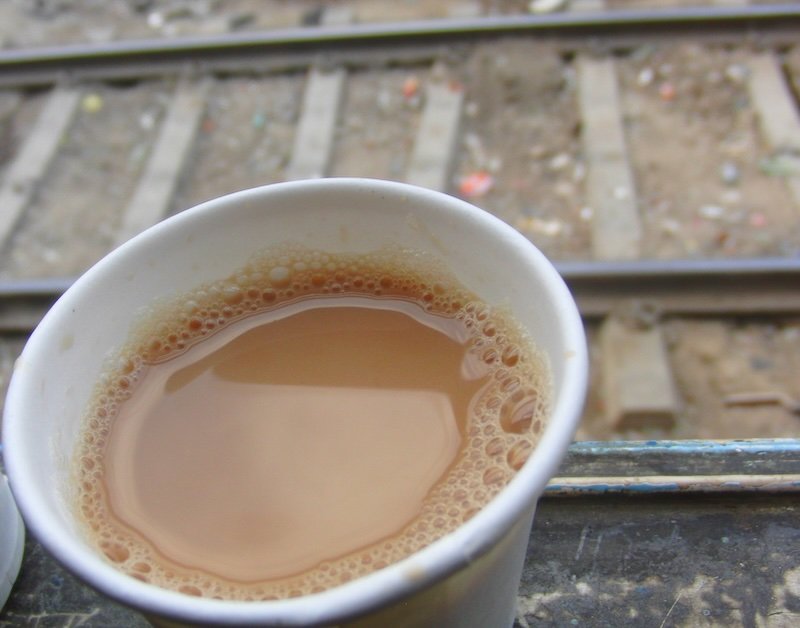
Small bills:
It’s a good idea to have small bills on you in case you get hungry (it can be quite hard to break large bills). A cup of chai should cost you around 10 rupees, which is about $0.15.
And those are my essentials. Let me know if there’s anything else you’d bring along to help ease those long journeys.
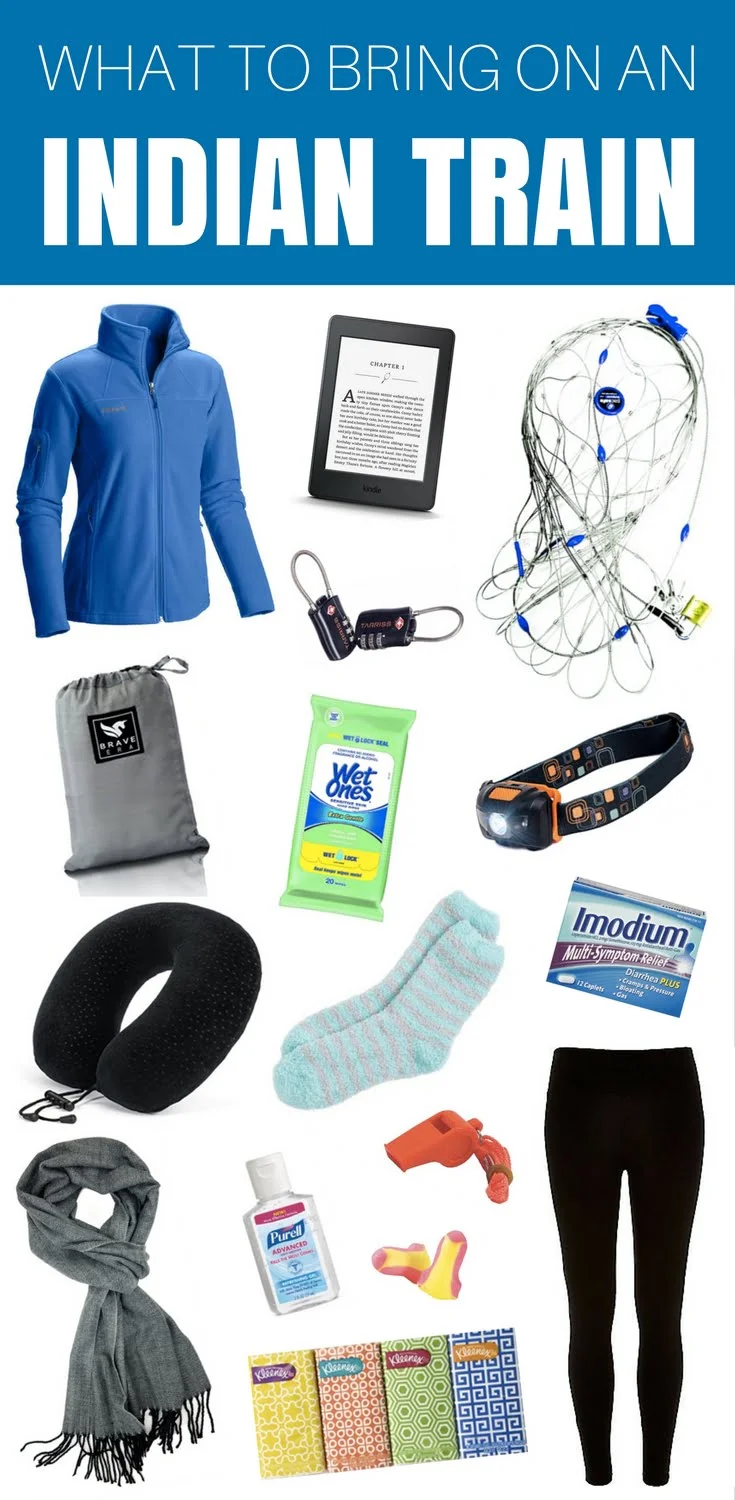
Indian Train Travel Planner: Tips, Booking, Classes, Planner and On-Board Survival Guide
If you’ve read my original packing list for Indian trains and thought, “Okay…but how do I choose a class, book a berth, not miss my coach, and avoid hanger at 2 a.m.?”—this add-on is for you.
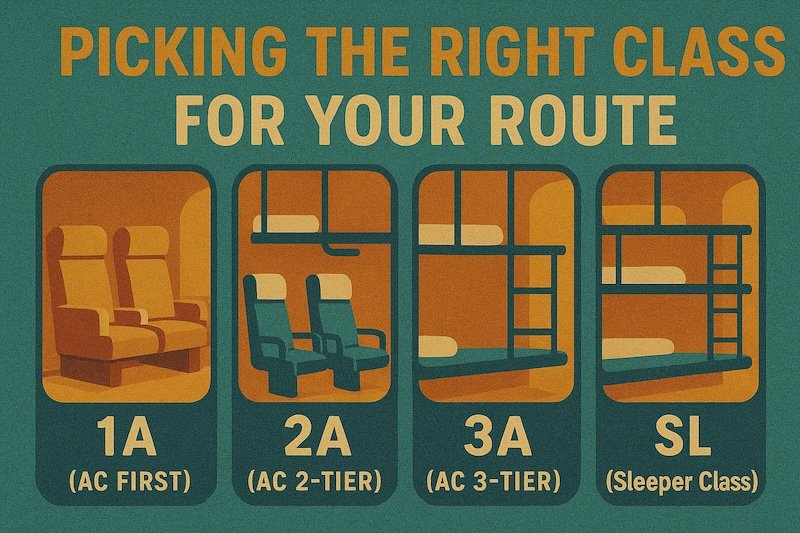
Picking the Right Class for Your Route
Indian Railways has a seat/berth for every budget and comfort level. Think about time of day, journey length, temperature, and how much you want to sleep before you book.
| Class | A/C | Berths/Seats | Bedding | Privacy | Best For | Watch-Outs |
|---|---|---|---|---|---|---|
| 1A (AC First) | Yes | 2 or 4-berth cabins | Yes | Door + attendant | Splurge nights, max privacy | Limited availability; pricey |
| 2A (AC 2-Tier) | Yes | 4 berths + 2 side berths | Yes | Curtains | Comfortable overnights | Chill A/C; bring layers |
| 3A (AC 3-Tier) | Yes | 6 berths + 2 side berths | Yes | Curtains on newer coaches | Budget overnights | Busier; higher foot traffic |
| SL (Sleeper Class) | No (fans) | 6 berths + 2 side berths | No | Open bays | Cool seasons, day trips, social vibes | Hot in summer, dusty |
| CC (AC Chair Car) | Yes | Reclining seats | No | Assigned seats | Daytime routes | Light jacket for A/C |
| EC (Exec. Chair) | Yes | 2+2 seating | Sometimes | Quieter car | Fast day trains (Shatabdi/Vande Bharat) | More expensive |
| 2S (Second Seating) | No | Bench/assigned seats | No | Open | Short hops | Noisy and basic |
| Vistadome | Yes | Panoramic seats | No | Big windows | Scenic routes | Limited routes, higher fare |
Berth Basics (And Which One to Pick)
- Lower berth: Most convenient; doubles as day seating. Downside: people may sit on it during the day.
- Middle berth (3A/SL only): Fine for sleeping, annoying during the day because it folds down late.
- Upper berth: Cave-like peace; you can nap any time. Downside: climb needed; colder under A/C vents.
- Side lower/upper: Along the aisle; breezier, great for people-watching. Downside: narrower, more foot traffic.
My rule of thumb: For long overnights, I choose 2A upper (quiet + curtain) or 3A upper (budget + okay sleep). For winter day rides, Sleeper Class is perfectly fine and very social.
How to Book Tickets Without Headaches
There are four main ways travelers book:
- IRCTC (official website/app): Cheapest fares, full control. Create an account, add international phone if needed, and keep your PNR (10-digit booking number) handy.
- Authorized partners/OTAs: If IRCTC verification annoys you, third-party sites and apps can book for a small fee.
- Foreign Tourist Quota (FTQ): A limited set of seats reserved for foreigners on select trains. You can often access FTQ through IRCTC or at larger station counters.
- Tatkal (last-minute): A quota released a day before departure (timings vary by class). Prices are higher; tickets go fast.
Waitlist vs. RAC (And What That Means)
- WL (Waitlist): Not yet confirmed. You cannot board if still WL at departure. Watch your status—WL usually moves as people cancel.
- RAC (Reservation Against Cancellation): You have the right to board and a shared seat/berth that may convert into a full berth if others cancel.
Tip: Check your PNR status on the IRCTC app or “Where Is My Train” up to departure; it updates in real time.
Booking Timeline Tips
- Festival seasons and school holidays: Book as early as possible (Indian Railways opens booking up to ~120 days for many trains).
- Overnight popular routes (Delhi–Varanasi, Mumbai–Goa): 4–8 weeks early is safe; earlier in peak season.
- Using Tatkal? Be online and logged in 10 minutes before the window opens; fill passenger details in advance.
The Day-Of Station Game Plan
- Arrive 45–60 minutes early. Big stations are a maze; spare yourself the sprint.
- Find your platform on departure boards (look for your train number).
- Coach positions are often marked on boards or LED displays; ask staff if unsure.
- PNR charting: Paper charts still appear on boards; your name and berth are printed there. Digital in the app is quicker.
- Porters (“coolies”) wear red; agree on price before they grab your bag.
Safety & Etiquette Cheat Sheet
- Keep valuables on you or in a small daypack secured to your body/belt.
- Lock big bags under the lower berth using a cable/chain.
- Respect shared space: Fold up berths on time, share seating during the day, keep shoes near your berth.
- Dress comfortably + modestly to blend in (bonus: fewer stares).
- Lights out etiquette: Use a headlamp after lights dim; keep noise low.
Food & Water Strategies (So You Don’t Get Hangry)
You’ve got four options—mix and match based on the train and your stomach.
| Option | What It Is | Pros | Cons | How To |
|---|---|---|---|---|
| Pantry Car | Onboard kitchen (not on every train) | Hot meals; delivered to seat | Quality varies; peak times sell out | Ask the pantry staff or TTE; pay in cash/digital |
| Station Vendors | Snacks/meals sold on platforms | Fresh chai, samosas, regional treats | Short halts; hygiene varies | Hop off only if the stop is long; keep an eye on your coach |
| E-Catering | Meals ordered to your seat via apps | Big menus; branded restaurants | Needs data signal + planning | Use IRCTC “Food on Track”/Zoop; order by PNR |
| DIY Picnic | Your own snacks/food | Control over hygiene; cheaper | Heavy to carry; limited variety | Stock up on nuts, fruit (washable), biscuits, instant noodles |
Water: Buy sealed Rail Neer bottles onboard or at stations; keep a big bottle and a smaller sipper. Avoid cut fruit and salads unless you’re comfortable with the vendor.
Chai math: A small cup is usually ₹10–20. If you hear “chaiii, chaiii,” follow your nose.
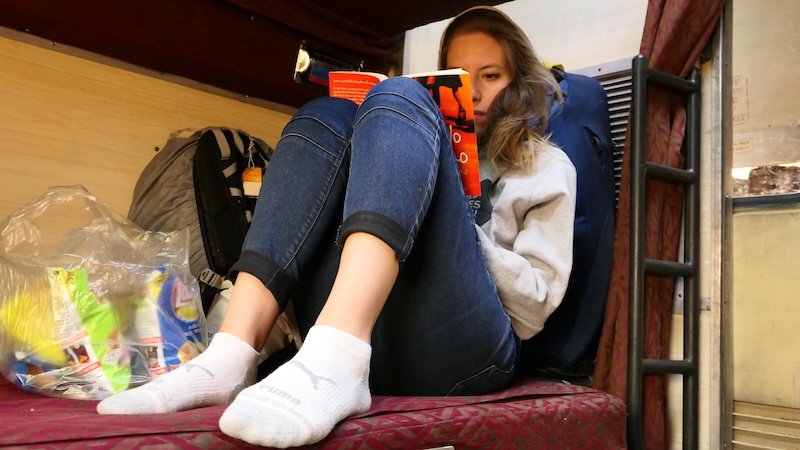
Hygiene & Health (A Real Talk Section)
- Toilets: Most long-distance trains have both Western and squat toilets in each coach. Carry TP, wipes, sanitizer. Soap often runs out.
- At night: Bring a headlamp, hang your toiletry bag on the door hook, and wear flip-flops.
- Bedding: 1A/2A/3A provide sheets, blanket, and pillow. I still like a silk liner or light travel sheet.
- Health kit: ORS (rehydration salts), Imodium for emergencies, pain reliever, and any prescriptions. Don’t skip water to avoid the loo—sip steadily.
Sample Packing Add-Ons by Class
If You’re in AC Classes (1A/2A/3A)
- Light fleece/hoodie, scarf, warm socks
- Earplugs + eye mask
- Travel sheet (optional but cozy)
- Power bank (sockets can be busy)
If You’re in Sleeper Class
- Light blanket/sheet, travel pillow
- Dust mask or buff in dry season
- Extra wipes and hand soap sheets
- Small cloth to wipe the window rail/berth
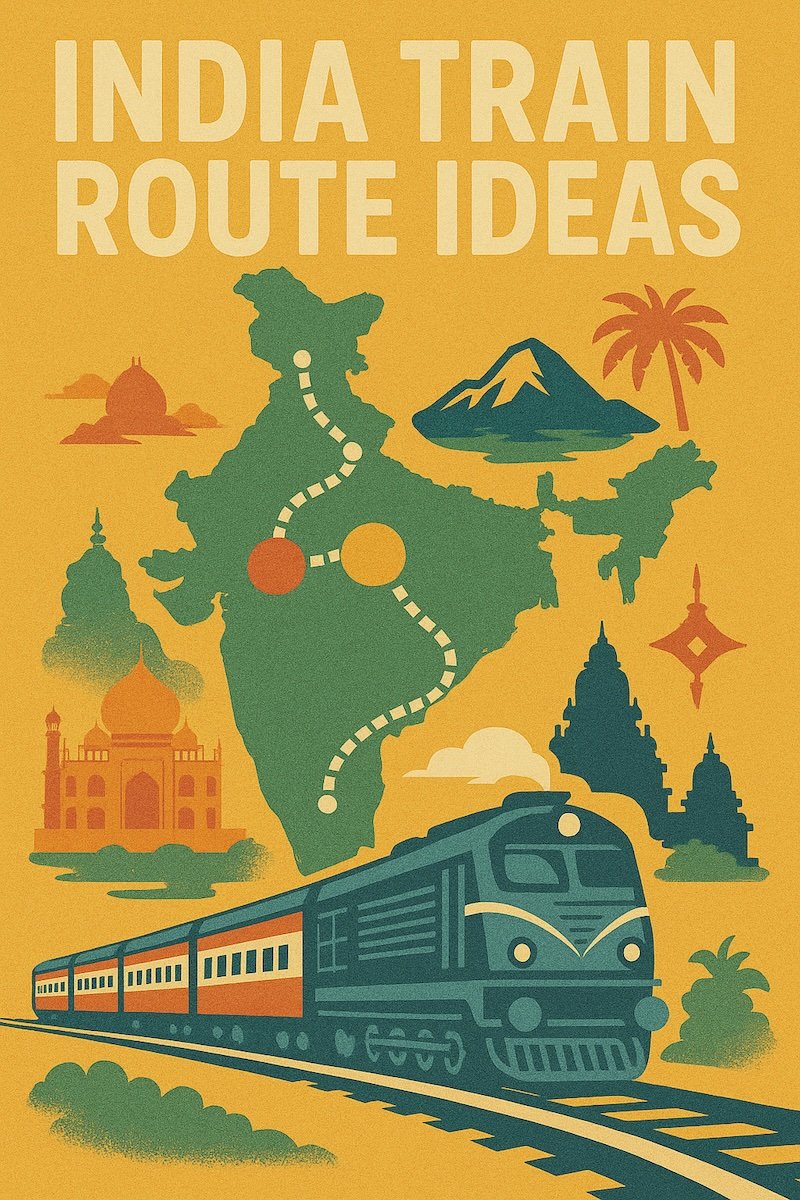
Route Ideas & Realistic Durations
| Route | Typical Duration | Notes |
|---|---|---|
| Delhi ↔ Varanasi | 12–15 hrs | Great overnight in 2A/3A; multiple daily trains |
| Mumbai ↔ Goa | 8–12 hrs | Coastal views; book early in high season |
| Jaipur ↔ Jodhpur | 5–6 hrs | Easy daytime ride; CC or SL works |
| Delhi ↔ Amritsar | 6–8 hrs | Day ride with food; Golden Temple awaits |
| Kolkata (Howrah) ↔ NJP (Darjeeling gateway) | 9–12 hrs | Overnight; connect to shared jeep/toy train |
| Bengaluru ↔ Hospete (Hampi) | 7–10 hrs | Night train + short auto to Hampi |
| Chennai ↔ Madurai | 8–10 hrs | Scenic Tamil Nadu; solid overnight |
| Udaipur ↔ Jaipur | 7–8 hrs | Day or night; 3A is comfy |
| Agra ↔ Varanasi | 10–13 hrs | Overnight; consider 2A/3A |
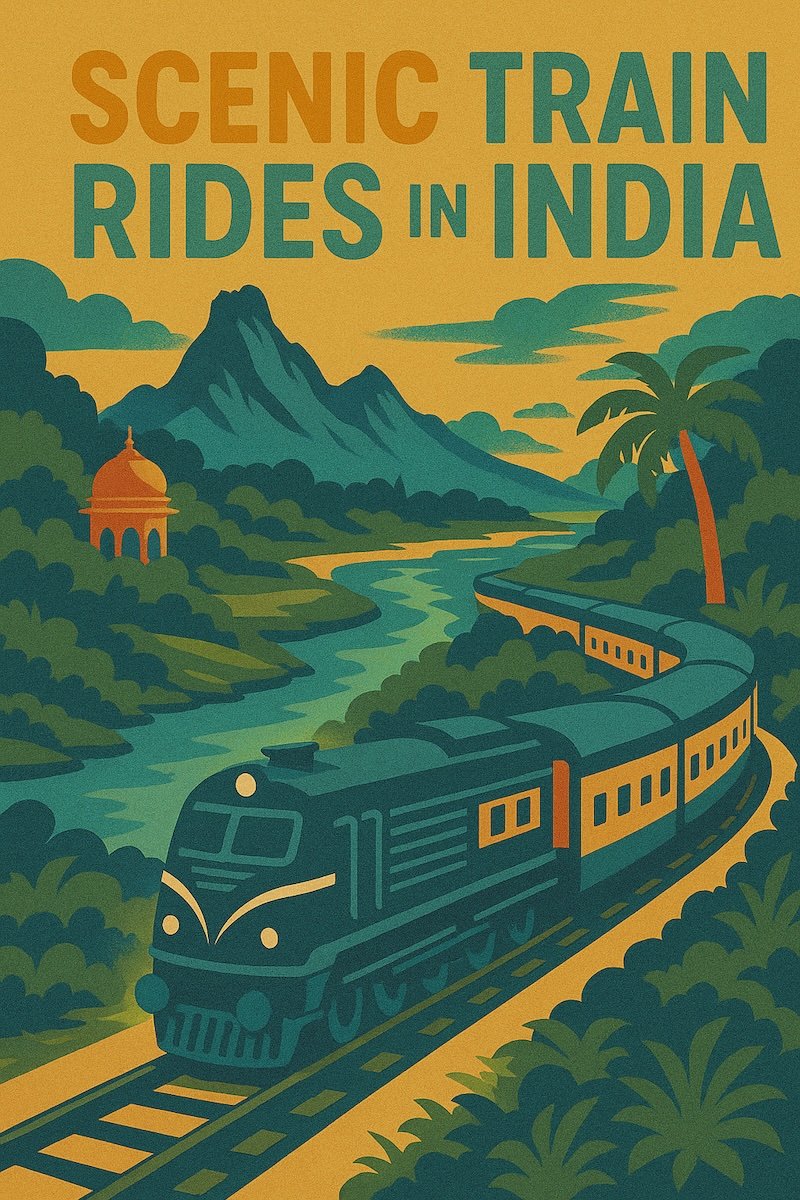
Scenic Rides to Savor
- Konkan Railway (Mumbai–Goa–Mangalore): Tunnels, bridges, lush coast.
- Kalka–Shimla Toy Train: Hill railway with hairpin bends and views.
- Jodhpur–Jaisalmer: Thar Desert sunrise/sunset if you time it right.
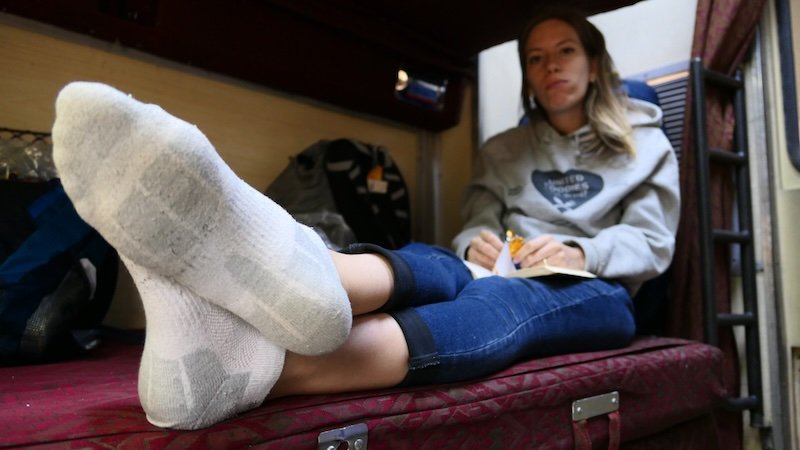
Solo & Female Traveler Notes
- Book upper berths for privacy; ask to swap if you’re assigned a lower and feel exposed.
- Sit near families during the day; they’re often wonderfully protective.
- Share your PNR and arrival time with a friend; pre-book a taxi (Ola/Uber where available).
- Consider day trains for the first ride to build confidence, then graduate to overnights.
Families With Kids
- Aim for a bay of 4 in 2A or side berths so little ones can stretch.
- Bring coloring books, magnetic games, audiobooks, and snack bento boxes you can refill.
- Set toilet breaks before lights out, and pack PJs + a soft blanket to signal bedtime.
Tech That Truly Helps
- IRCTC Rail Connect: Official booking app.
- Where Is My Train (Android): Live location, platform info, PNR status—even offline.
- NTES: Live train status (official).
- Google Maps Offline: Watch your progress; know when your stop is next.
- Ola/Uber: For safe onward rides (works in most big cities).
- Food on Track / Zoop: E-catering to your seat (enter PNR).
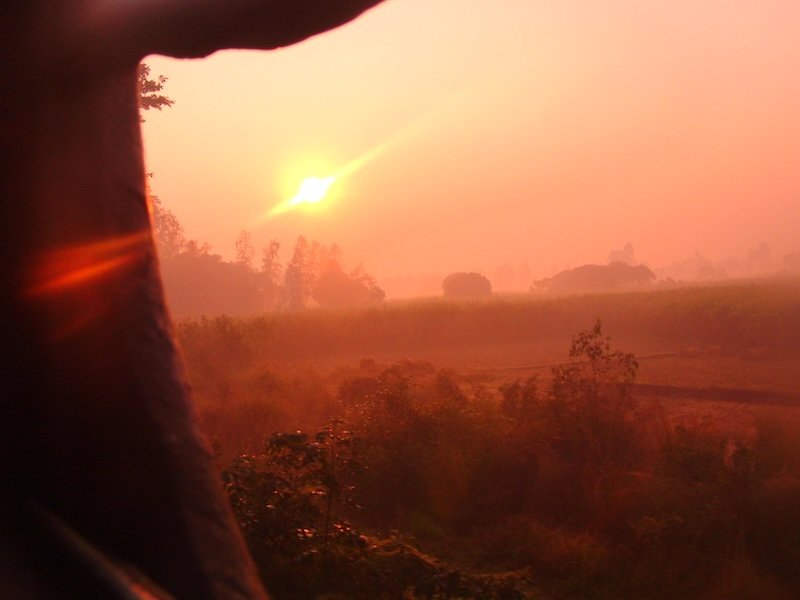
Build Delay Buffer Into Your Itinerary
- Don’t book tight connections to flights or tours on the same day. Give yourself a cushion of hours (or an extra night) for peace of mind.
- If you must connect, choose morning arrivals (more recovery time if delayed).
- Have a Plan B: a list of nearby hotels at your arrival station and screenshots of directions.
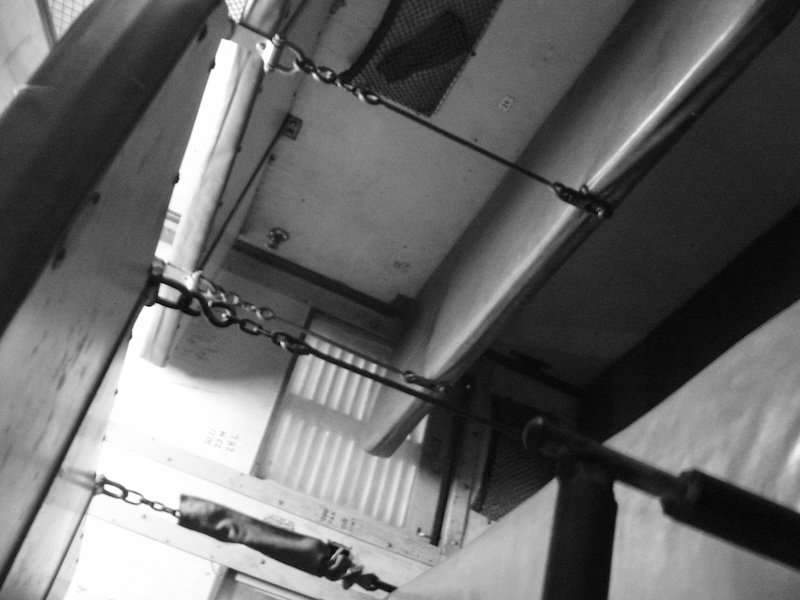
If Something Goes Wrong
- Your best friends on board are the TTE (Ticket Examiner) and coach attendant. They can help with berth swaps, issues, and information.
- For safety or medical help, use the railway helplines posted in coaches (security helplines commonly include 182; general enquiries often 139—confirm in your train/carriage).
- For lost items, note your coach and seat/berth number and file a report at the next major station.

Quick Checklists
Pre-Booking Checklist
- Decide class based on season, length, and comfort.
- Create/verify IRCTC account (or choose a trusted partner).
- Check FTQ and Tatkal options if dates are tight.
- Screenshot PNR and itinerary to your phone.
Day-of Departure Checklist
- Cash in small bills (chai/snacks love ₹10/20/50).
- Lock checked bag; cable it under the berth.
- Pack within reach: TP, wipes, sanitizer, headlamp, layers, snacks, water, power bank.
- Arrive 45–60 minutes early; confirm platform and coach position.
On-Board Bedtime Routine
- Layout travel sheet; stash shoes in a corner/bag.
- Secure daypack to your body or berth.
- Set alarm for 30–40 minutes before your stop.
- Hydrate, but not a whole bottle just before sleep.
After-Arrival Checklist
- Keep calm getting off—do not jump while train rolls.
- Head to the main exit where rideshares and prepaid taxis queue.
- Double-check you have phone + passport before leaving platform.
- Ping your check-in text to someone who cares about you (hi, Mom!).
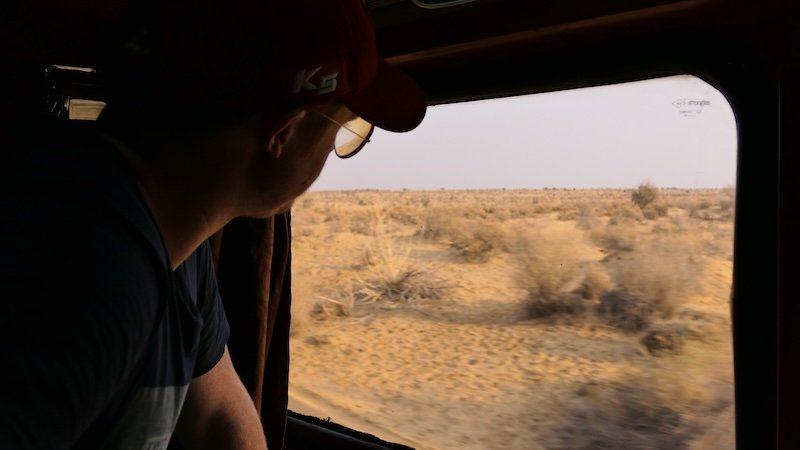
Indian Train Travel FAQ
Which class should I book for my first overnight train in India?
If you want comfort without a huge splurge, 2A (AC 2-Tier) is the sweet spot: you get bedding, curtains for privacy, and fewer people than 3A. Budget-minded travelers who still want A/C usually pick 3A, and Sleeper is best in cooler months if you’re okay with no A/C and bring your own bedding.
How early do I need to book tickets?
For popular routes and festival seasons, try 4–8 weeks in advance (earlier if possible). Government programs release seats months ahead; last-minute tickets can happen via Tatkal (one day prior), but they sell out in minutes.
What happens if my ticket is waitlisted (WL) or RAC?
WL means you don’t have a seat/berth yet. If it stays WL at departure, you shouldn’t board that coach. RAC lets you board with a shared seat that often converts into a full berth as cancellations process. Keep checking your PNR—it can clear even hours before departure.
Is it safe for solo female travelers on Indian trains?
Thousands of women ride the rails daily. Choose upper berths for privacy, sit near families during the day, and keep valuables on you while you sleep. Arrive early, pre-book your onward ride, and trust your instincts—if a seat feels uncomfortable, ask the TTE to move you near other women or families.
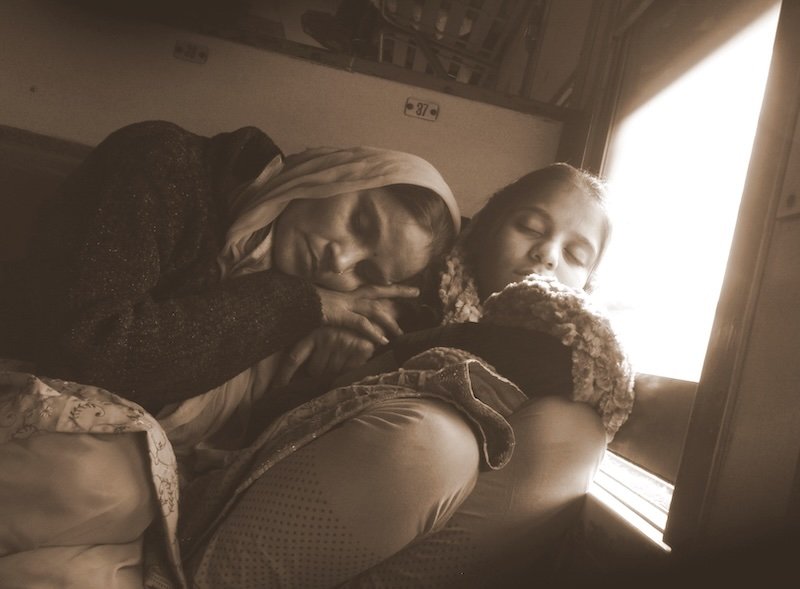
Will I get bedding on board?
Yes, in 1A/2A/3A you’ll be handed a sealed bedding pack with sheets, blanket, and pillow (quality varies). In Sleeper and seating classes, bring your own travel pillow and light blanket/sheet.
Can I charge my phone or laptop on the train?
Most long-distance coaches have power outlets (near berths in AC classes and at the ends of cars). They’re shared, so bring a power bank and avoid hogging sockets. Voltage fluctuations happen—use a surge-protected charger if you have one.
Is the food on trains safe to eat?
Plenty of travelers eat railway meals daily without issue. Stick to hot, freshly cooked items, sealed water, and reputable station vendors. If you’re picky about hygiene, order e-catering from known restaurants or pack a DIY picnic.
How do I find my coach on the platform?
Check the LED displays or posted coach position boards. Your coach code (e.g., A1, B2, S6) is on your ticket. Trains can be very long—walk toward your coach section rather than boarding any door and hauling bags through narrow aisles.
Can I hop off at stations to grab snacks?
Only if the scheduled halt is long enough (and the train is on time). Keep your coach number in mind, don’t stray far, and reboard well before the whistle. Personally, I prefer platform vendors near my coach or e-catering delivered to my seat.
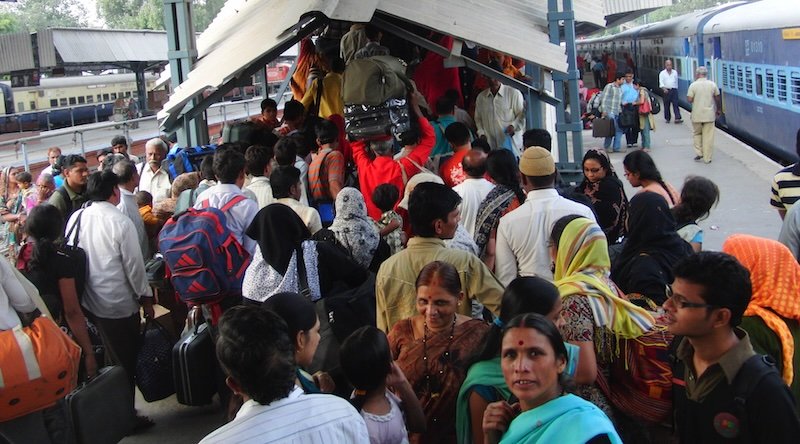
How much luggage can I bring?
There isn’t strict airline-style enforcement on most trains. A large backpack/suitcase and a daypack are standard. Store big bags under the lower berth and lock them; keep valuables in your daypack and secure it to yourself or the berth while sleeping.
What is Tatkal and how do I use it?
Tatkal is a last-minute quota released one day before the train’s departure (opening times depend on class). Fares are higher and demand is fierce. Have your IRCTC account logged in, passenger details saved, and payment method ready before the window opens.
What if my train is delayed or cancelled?
Delays are part of the adventure—build buffer time before flights/tours. If severely delayed, consider asking the TTE about alternatives or rebooking on the app. For cancellations, you can usually claim a refund through your booking channel. Keep screenshots and your PNR handy.
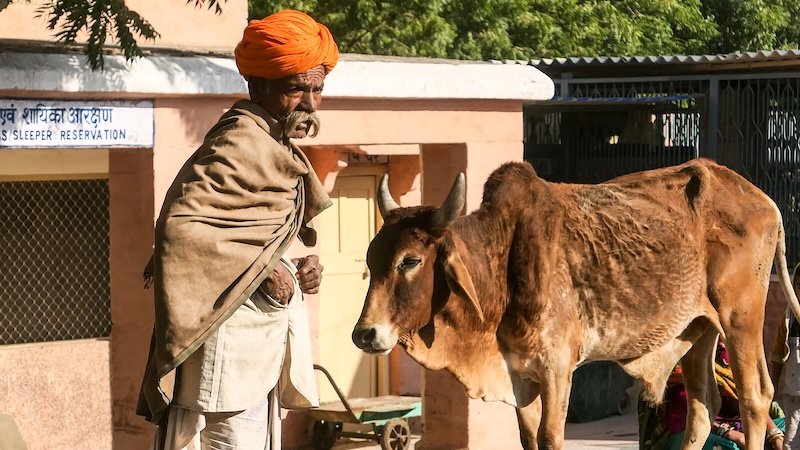
Have you travelled on an overnight Indian train?
What else would you recommend bringing along?

Great list Audrey! I agree with all of them! Especially the sanitizer and wipes. Not just for TP but to clean the little desk shelf and naga hide pad. They are filthy! We also brought ear plugs as a necessity. Indians will party on trains sometimes all night and keep the lights on. A bandana around your eyes and some ear plugs made some of our train rides bearable.
Being in India, I travel by train extensively and one thing I never fail to carry is my earphones.
Great list and useful tips for long train journey – I feel they’re not only for fit for India, but some other countries like China.
I am sorry that you have to bring a whistle along with you for your safety. It makes me feel ashamed to be Indian. 🙁
Let’s hope that changes one day…..
Hey Audrey,
Great list! 🙂 Whistle and earplugs are my must not only during my travels, everyday I have them with me because you will never know. Yes, earplugs would really help, trains can be really loud.
Thanks for sharing 🙂
Such a good list. I recommend you also bring pain relief and fever medicine.